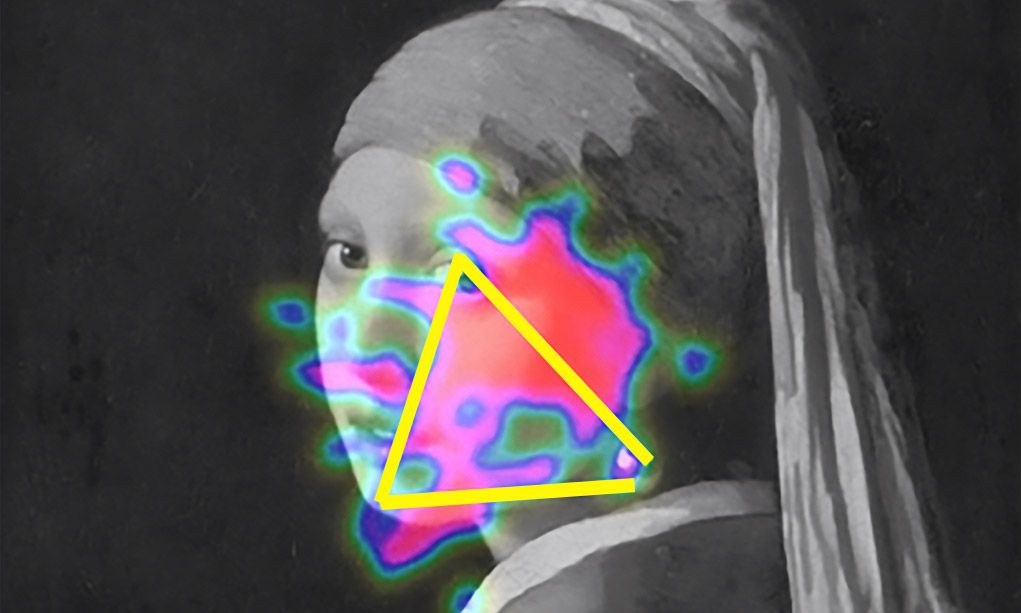The study suggests that the painting’s construction and key points of light trap the eye into a “sustained attention loop”
Courtesy of Mauritshuis
It is reproduced in everything from posters and films to tea caddies. Yet for years, art experts have wondered what makes Dutch master Johannes Vermeer’s Girl with a Pearl Earring (1665)—“the Mona Lisa of the north”—so appealing.
Now, an independent neurological investigation using eye-tracking technology electroencephalogram (EEG) and MRI scans on 20 volunteers, has found that it appears the painting’s construction and key points of light trap the eye into a “sustained attention loop”. Viewers look first at her eye, then her mouth, then her bright pearl earring, before being drawn back again into this “pearly triangle”.
In addition, the study—by researchers from the neuromarketing agency Neurensics and other scientists—found that when the volunteers looked at five works of art in the Mauritshuis museum in the Hague, including its star attraction, the “Girl with a Pearl Earring”, their brains responded ten times more positively than when they viewed reproductions.
“The Mauritshuis came to us with the question of how a brain responds to art and what makes the Girl with a Pearl so unusual,” said Martin de Munnik, the co-founder of Neurensics at the press view. “The results were extraordinary.”
The study—which Amsterdam University academics intend to publish as a scientific paper—found that artworks viewed in a museum provoked a dramatic response in the precuneus, part of the brain involved with consciousness, self-reflection and memories.
A volunteer taking part in the research at the Mauritshuis
Courtesy of the Mauritshuis
“With the EEG, you see that the positive effect of the real work is much bigger than with seeing posters, even though they were viewed in the museum too,” says de Munnik. “There was a ten times greater 'approach' signal than with the posters.”
The researchers also measured the volunteers’ response to going up in the glass-fronted museum lift to see the five paintings—during which time the lift stopped halfway as it passed a marble floor plate. While this activity gave an “attention” score of 0.44 out of 1, Girl with a Pearl Earring scored even higher, at 0.48.
“If you go up in a lift and it jolts, you have a shock… and this draws a lot of attention, which is logical: you could die or go a week without eating,” he says. “But even so, the Girl with a Pearl evokes more brain attention than something that is a potential danger… It demands your attention and whether you want to or not, makes you look for longer “
Herma van der Werf, 65 and from Zwolle, was visiting the Mauritshuis to see The Girl with a Pearl Earring when the study was launched on Wednesday. “I believe it,” she said. “You keep looking back and forward, while with some paintings you look at one part. And when you walk, it feels like her eyes go with you. It is very beautiful.”

